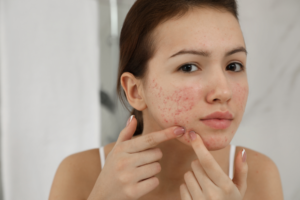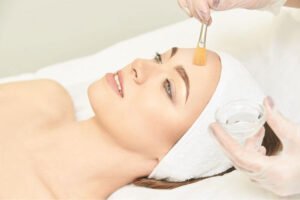Microneedling has become a skincare sensation, promising a clearer, smoother, and younger-looking complexion. But with so much information swirling around, it’s natural to have questions. Fear not! This blog dives into the most frequently asked questions about microneedling, providing clear and informative answers to equip you with the knowledge you need to make an informed decision.

What is microneedling and how does it work?
Imagine tiny needles creating micro-injuries in your skin’s top layer. That’s microneedling! These controlled injuries trigger your body’s natural healing response, stimulating collagen and elastin production for firmer, smoother skin.

What are the benefits of microneedling?
Microneedling offers a spectrum of benefits, including:
- Reduced fine lines and wrinkles: Say goodbye to those pesky lines and hello to smoother skin.
- Minimized acne scars and hyperpigmentation: Fading away imperfections for a more even-toned complexion.
- Improved skin texture and tone: Bid farewell to dullness and hello to a radiant, revitalized texture.
- Boosted collagen production: Hello, firmer, younger-looking skin!
- Addressed stretch marks and enlarged pores: Microneedling can help diminish these concerns.

Can microneedling help with specific concerns?
- Hair loss: While research is ongoing, microneedling may stimulate hair growth in some cases.
- Dark circles: Microneedling with specific serums can improve their appearance.
Is microneedling safe for everyone?
While generally safe, it’s crucial to consult a dermatologist if you have:
- Active acne: Microneedling could spread the bacteria.
- Rosacea or eczema: These conditions can be aggravated by the procedure.
- Open wounds or infections: Increased risk of infection.
- Blood-thinning medications: Can increase bleeding risk.

What are the possible side effects of microneedling?
Possible side effects, usually mild and temporary, include:
- Redness
- Swelling
- Bruising
- Tightness
- Sensitivity
Remember: These side effects typically subside within 24-48 hours.
Are there long-term risks associated with microneedling?
While very rare, potential long-term risks include allergic reactions, scarring, and hyperpigmentation. However, consulting a qualified professional and following proper aftercare procedures can significantly minimize these risks.

How does microneedling compare to other skin treatments?
Microneedling offers a less invasive and potentially more affordable alternative to:
- Lasers: Can be more expensive and have longer recovery times.
- Chemical peels: Can be harsh and cause significant peeling.
- Dermabrasion: Both exfoliate, but microneedling is gentler.

What is the preparation process for microneedling?
- Disclose all medications you’re taking.
- Avoid blood thinners and certain skincare products beforehand.
- Inform your dermatologist about your skin concerns and goals.
- How long before microneedling should I stop using retinol? Ideally, stop 2-3 days prior to avoid irritation.
Conclusion:
Microneedling can be a powerful tool for achieving a radiant, rejuvenated complexion. By understanding the procedure, its benefits and potential risks, and by following proper preparation and aftercare guidelines, you can make an informed decision and embark on this transformative journey.
Ready to unlock the potential of microneedling and experience the Ziva Wellness difference?
Contact Ziva Wellness today! Vini Singh MD and her team of experienced professionals will assess your individual needs, guide you through every step of the process, and ensure a safe and effective experience that empowers you to achieve your skin goals. We offer personalized treatment plans, utilize the latest technology and techniques, and prioritize your comfort and satisfaction throughout the journey.
Don’t wait to unveil your best skin yet!
Visit our website or call us today to schedule a consultation.




